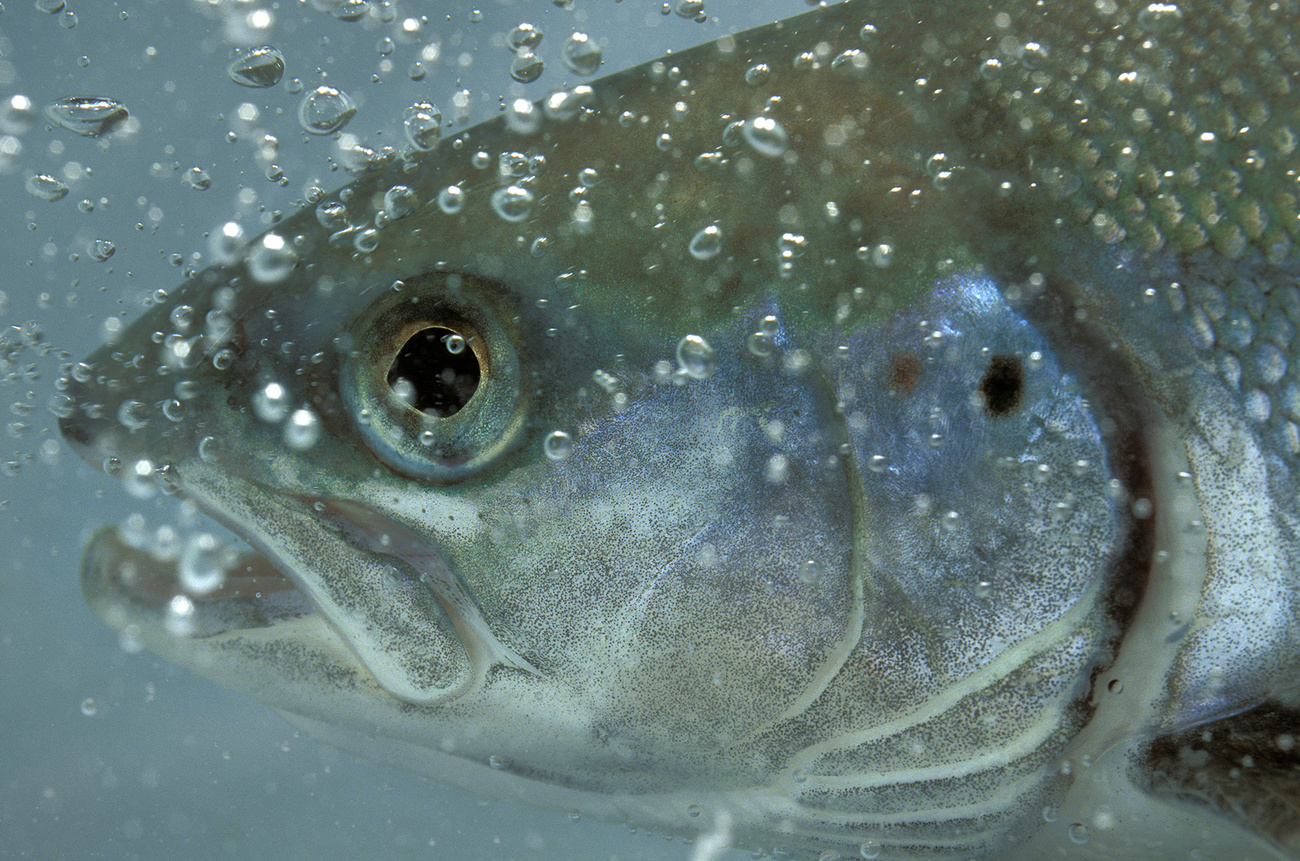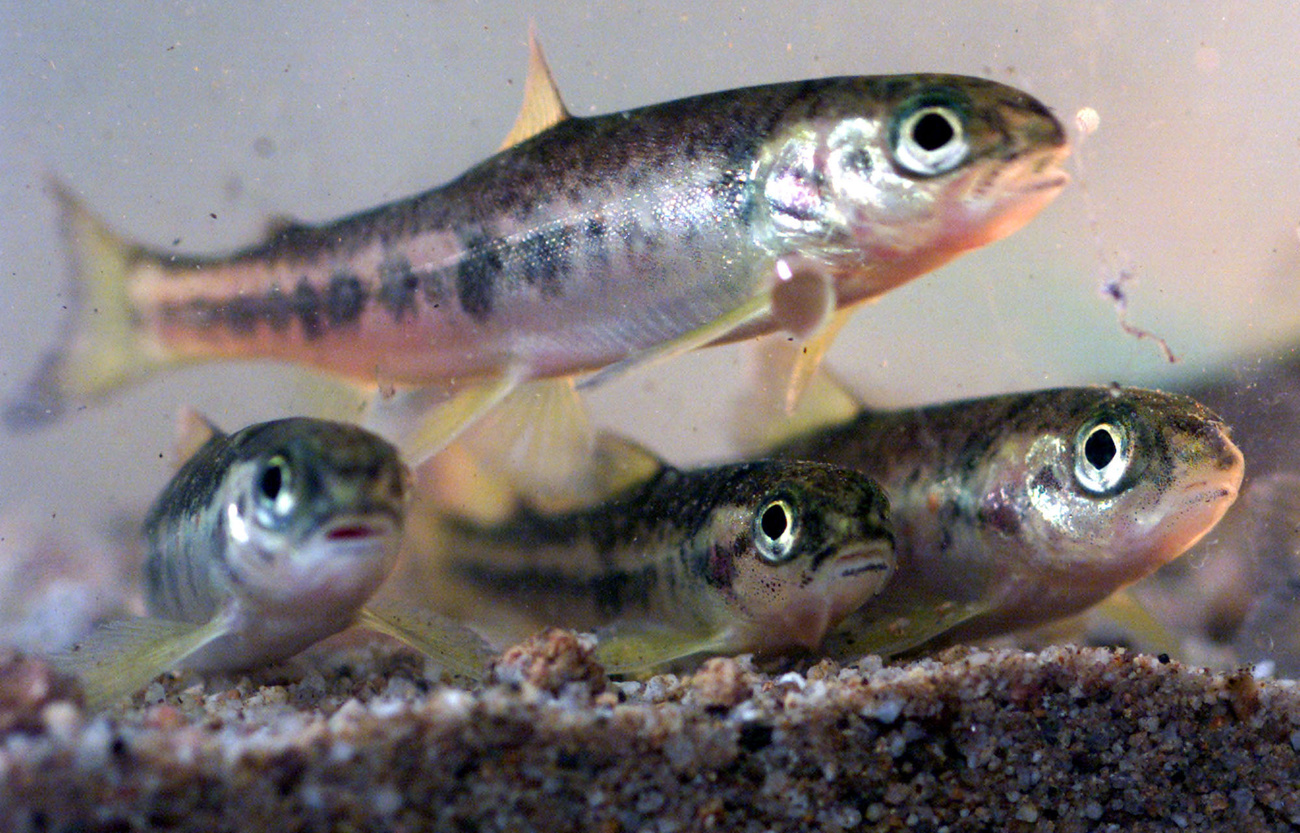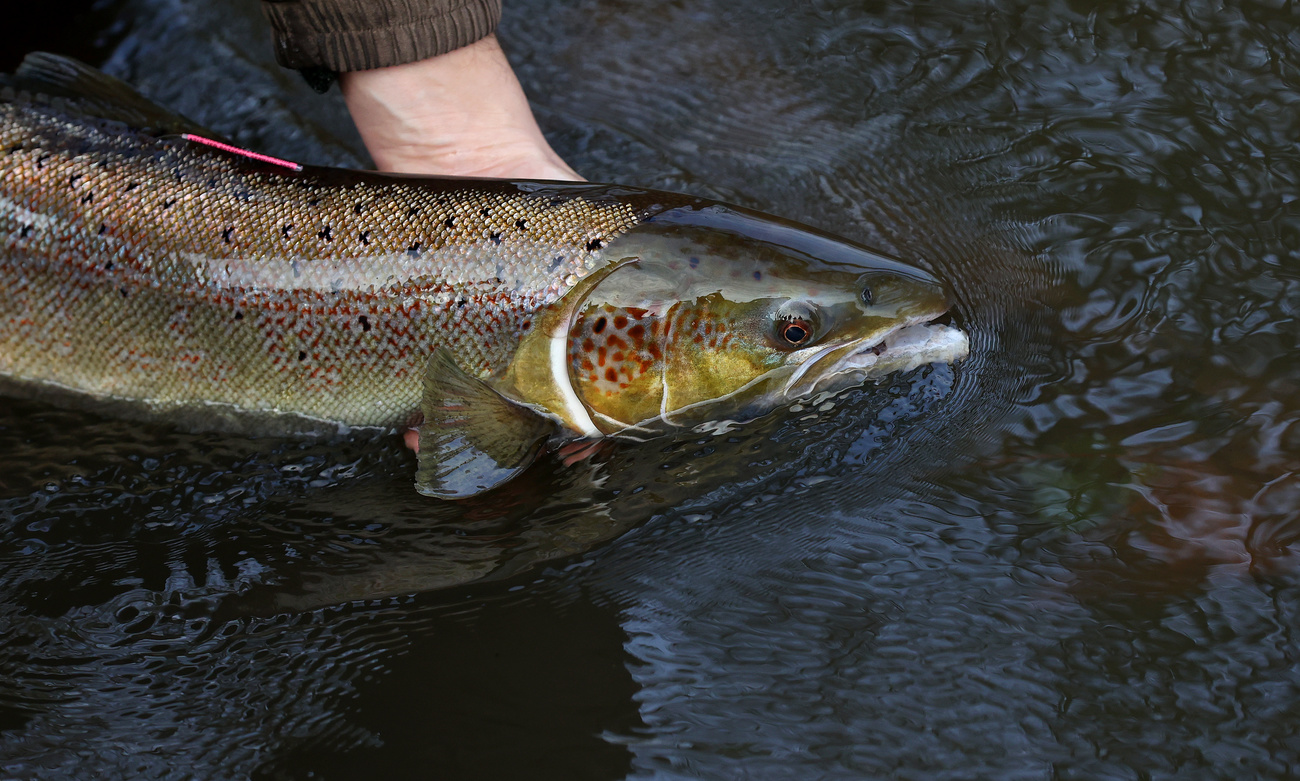
Why isn’t the salmon making a comeback in Switzerland?

The return of salmon in Switzerland has so far been a flop. Experts are dismayed and are looking for answers.
First the good news: young salmon, thousands of which are released in Switzerland every year, manage to swim towards the sea. This is not something to take for granted, as they swim in the middle of the river and must deal with turbines at power stations on the river. They run the danger of being chopped up or crushed.

Take the small river Bünz in canton Aargau, for example. The fish have to pass through three turbines on the way to the Rhine. “Around 81% made it, which was a positive surprise for us,” says fish ecologist Armin Peter. He tagged the fish for a study.
There are a further 14 turbines to the lowest power station in the Rhine. “There are actually young salmon that survive this journey,” says Peter, who is investigating this in another ongoing study.
Number of returnees decreases drastically
There has also been good news for a long time about the return journey, i.e. from the sea. According to fish ecologist Jörg Schneider from Frankfurt am Main, around 1,000 to 2,000 salmon migrated back up the Rhine to the tributaries every year to spawn there. “But after 2015, this population collapsed again, by up to 80%.”
The fish ecologists are dismayed. Schneider has now been commissioned by the International Commission for the Protection of the Rhine to investigate the reasons for this decline.
Cormorants and catfish like salmon
There are many possible reasons. Firstly, there are the fish-eating birds such as goosanders and cormorants, which have proliferated in recent years. “Remains of tagged salmon are regularly found in the cormorants’ nests,” says fish ecologist Schneider.
In addition, fewer salmon are returning from the sea at all. “This is a big issue among salmon specialists right now,” says Schneider. However, it is unclear what is happening in the sea. Is it global warming? Are the current conditions or the salmon’s food source changing? Research is following all potential leads.
Deadly propellers
Of the few fish that then swim back up the Rhine as adults at around 70 centimetres in length, many get caught in the suction area of the ship’s propellers and are killed. “This was underestimated for a long time,” says Schneider, “But we regularly find dead fish with characteristic cut marks.”
Finally, the catfish, that grow up to three metres in size and likes to eat salmon, are waiting in front of the river power plants. “In certain places, it has even made itself at home in the fish ladders,” says Schneider, “where up to a third of the returning salmon are eaten”.
Not giving up
So there is a whole bundle of possible reasons that are preventing the return of the salmon. It is not just the hydroelectric power plants downstream of Basel, some of which do not yet have fish ladders. Nevertheless, the fish ecologists are not thinking of giving up. “We now have to research the individual points better and then move on,” says Schneider.

And Armin Peter adds: “Where the salmon can get through, the rivers will also become passable again for many other migratory fish,” says the Swiss fish specialist. “So giving up is not an option.”

In compliance with the JTI standards
More: SWI swissinfo.ch certified by the Journalism Trust Initiative

















![The four-metre-long painting "Sonntag der Bergbauern" [Sunday of the Mountain Farmers, 1923-24/26] had to be removed by a crane from the German Chancellery in Berlin for the exhibition in Bern.](https://www.swissinfo.ch/content/wp-content/uploads/sites/13/2025/12/01_Pressebild_KirchnerxKirchner.jpg?ver=8f77363a)











You can find an overview of ongoing debates with our journalists here . Please join us!
If you want to start a conversation about a topic raised in this article or want to report factual errors, email us at english@swissinfo.ch.